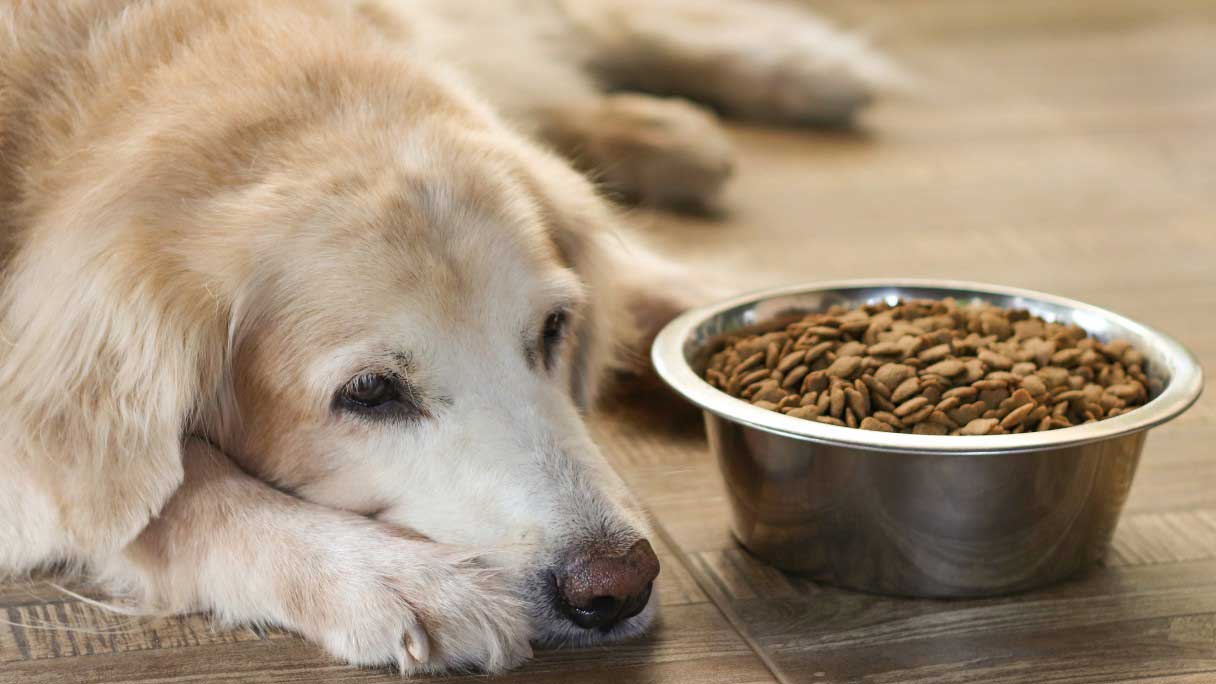If you notice your dog straining to urinate, having accidents even though they are house-trained or their urine looks darker than usual, they may have bladder stones.
What Are Bladder Stones?
As the name suggests, bladder stones are rocklike formations of minerals that typically range in size from a grain of sand to a piece of gravel.1 That may not sound that big, but if you've ever had a bladder or kidney stone, you know they can be extremely painful to pass — if they pass at all.
These stones form in the bladder and can become a serious issue if they get stuck in the urethra, which is the tube that urine passes through to go from the bladder to outside the body.1
Types of Bladder Stones in Dogs
The type of bladder stone depends on its mineral composition. There are five types of bladder stones, with the most common being struvite (magnesium ammonium phosphate) and calcium oxalate.2
- Struvite (magnesium ammonium phosphate) stones account for 50% of canine bladder stones and are usually the result of a urinary tract infection. Bacteria increases the pH of the urine, decreasing the solubility of struvite crystals. The breeds that most commonly get struvite bladder stones are miniature schnauzers, miniature poodles, bichons frises and cocker spaniels.2
- Calcium oxalate stones account for 35% of bladder stones in dogs.2 The cause isn't clear to veterinarians, though current research shows that they likely form in dogs with diets that cause high urine acidity.3 The breeds that most commonly get calcium oxalate bladder stones are miniature and standard schnauzers, miniature poodles, bichons frises, Lhasa apsos, Yorkshire terriers and shih tzus.2
Other forms of bladder stones include urate (more common in dalmatians), cystine (an inherited disorder most often found in male dachshunds between 3 to 6 years old) and silicate (connected to the consumption of large amounts of corn gluten and soybean hulls and most commonly affects German shepherds, Old English sheepdogs and golden and Labrador retrievers).2
Common Causes of Bladder Stones in Dogs
The cause of the bladder stone(s) depends on your dog and the type of stone that was formed, but in general, veterinarians still don't fully understand how bladder stones are formed.2 They do know that conditions that contribute to the formation of bladder stones include:2
- High concentration of salt in urine (due to diet, infection or disease)
- Salt sitting in the urinary tract for an extended period of time
- A pH that encourages crystallization
- A decrease in the mechanisms in the body that typically prevent crystal formation
Bladder stones can develop in weeks or months, depending on the minerals present and the root cause.1
Symptoms of Bladder Stones in Dogs
The symptoms of bladder stones in a dog are very similar to a urinary tract infection, so it's important to get your dog to the veterinarian for a diagnosis if you notice any of the following:2
- Straining to urinate
- Discomfort when urinating
- General abdominal discomfort
- Blood in urine
- Having accidents
- Frequent urination in small amounts
If your dog is dribbling urine or trying or straining to urinate but nothing comes out, they may have a urinary obstruction and you need to get your dog to the veterinarian immediately for treatment.2
Diagnosing Bladder Stones in Dogs
When it comes to diagnosing bladder stones in dogs, your veterinarian will usually take an X-ray (radiograph) and run a blood and/or urine test. Most bladder stones will show up on an X-ray, but sometimes a contrast X-ray or an ultrasound will be recommended.2
Treating Bladder Stones in Dogs
If your dog has been diagnosed with bladder stones, there are three main treatment options, depending on the type and location of the stones:1
- Surgical removal
- Non-surgical removal
- Dietary dissolution
Calcium oxalate, urate, cystine and silicate stones won't dissolve on their own and require treatment. Struvite stones can occasionally be dissolved with a specifically formulated diet.2
There are ways to help prevent bladder stones (see more information in the next section), but there aren't any scientifically proven at-home remedies.
Surgical removal
Surgical removal (cystotomy) is the fastest way to treat bladder stones.1 Your veterinarian or a veterinary surgeon goes directly into the bladder and removes the stones.1 Postoperative recovery is usually pretty quick.1 A cystotomy can start around $586.95 on the low end.4 But on the high end, costs are upwards of $4,0005 and vary based on your location and the number of stones, health of bladder, sex of the dog, etc.
Non-surgical removal
Non-surgical removal is considered if the stones are small enough and/or your dog has health concerns or it would be problematic to put them under general anesthesia.1 The non-surgical options include urohydropropulsion (using a catheter to flush the stones out) or removing the stones with a cystoscope.1 Urohydropropulsion can cost between $1,000 to $2,800, again depending on a variety of factors.6
Another option is a laser lithotripsy.2 This can be non-surgical through the urethra or require a small incision in the bladder for the endoscope and laser fiber.2 The laser then breaks the stones up so they can easily be collected and removed or flushed from the urinary tract.5 This procedure can cost as much as $4,200.5
Dietary dissolution
Lastly, there are commercial dog foods that are formulated to dissolve bladder stones, but it can take weeks or months (which means the obstruction is still a concern for your dog during this time) and not all dogs will eat it.1 These foods might be more expensive than regular dog food and can range in price depending on the size of the bag, the type of food and the brand.
Note: Regardless of type, if the stone is causing an obstruction in the urethra, it's considered an emergency situation and may require immediate surgery or urohydropropulsion to dislodge the stone.2
Preventing Bladder Stones in Dogs
After removing the bladder stone(s), your veterinarian will send them to a lab for analysis to determine the type of stone. Based on that information, your veterinarian may recommend a special diet for your dog to prevent bladder stones from forming in the future.1
It's also important to keep your dog hydrated so their urine remains diluted. Bladder stones are less likely to form in diluted urine, and if any substances do form, they're more likely to be dissolved. Besides making water available to your dog at all times, feeding them wet food is another easy way to help them stay hydrated.7
CareCredit Credit Card Financing for Dogs
The CareCredit credit card provides a convenient way to pay for your dog's vaccinations and other health and wellness expenses, including exams, medications and products at providers in the CareCredit network.* Continue your wellness journey by downloading the CareCredit Mobile App. You can find a provider on the go, manage your CareCredit account and easily access the Well U blog for more great articles, podcasts and videos. Use our Acceptance Locator to find a veterinarian that accepts CareCredit to help keep your pet healthy and happy for a lifetime of love.
Author Bio
Abbie Mood is a freelance writer with more than 10 years of experience. She has worked with clients of all sizes to create compelling content and she has written for the American Kennel Club, Marriott Bonvoy, Women's Health Online, Headspace and more.










